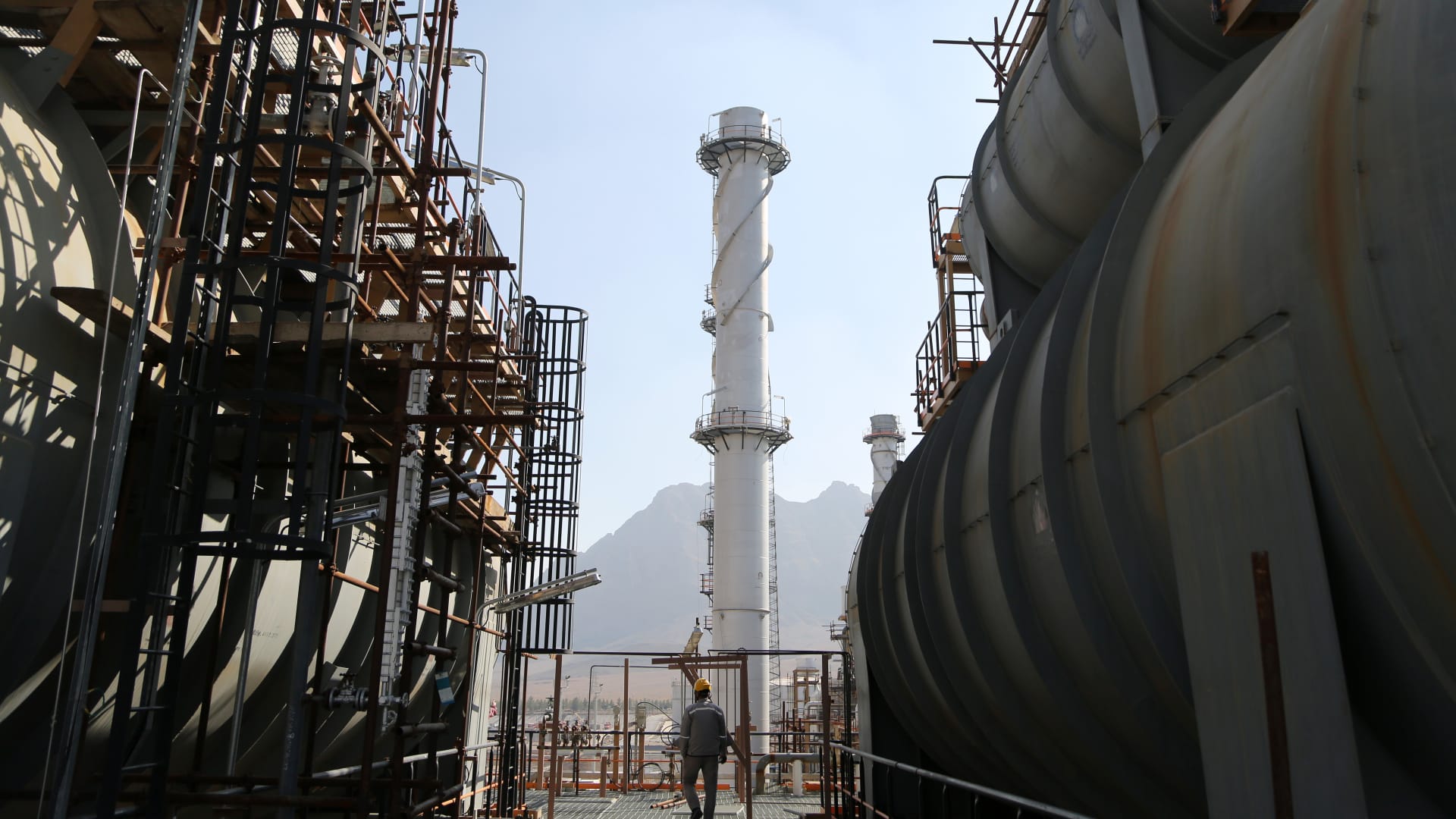Oil watchers are now seeing a genuine threat to crude supplies after Iran launched a ballistic missile attack on Israel, escalating conflict in the Middle East.
Iran on Tuesday launched the strike on Israel in retaliation for its recent killing of Hezbollah leader Hassan Nasrallah and an Iranian commander in Lebanon.
Iranian oil infrastructure may soon become a target for Israel as it considers a countermove, analysts told CNBC.
“The Middle East conflict may finally impact oil supply,” said Saul Kavonic, senior energy analyst at MST Marquee. “The scope for a material disruption to oil supply is now imminent.”
These latest developments could be a gamechanger, after a prolonged period of “geopolitical risk fatigue” during which traders brushed off threats of oil supply disruptions stemming from the situation in the Middle East as well as Ukraine, he said.
Up to 4% of global oil supply is at risk as the conflict now directly envelopes Iran, and an attack or tighter sanctions could send prices to $100 per barrel again, Kavonic added.

Iran’s latest missile attack followed Israel’s deployment of ground troops into southern Lebanon, intensifying its offensive against Hezbollah, the Iran-backed militant group. Most of the 200 missiles launched were intercepted by Israeli and U.S. defenses, and there were no reported fatalities in Israel as a result of the attack.
The attack came on the heels of Israel‘s deployment of ground forces into south Lebanon, escalating its offensive on Hezbollah, the Iran-backed militant group.
Oil prices gained over 5% in the previous session following the missile strike, before tapering to a 2% climb. Global benchmark Brent is now trading 1.44% higher at $74.62 a barrel, while U.S. West Texas Intermediate futures rose 1.62% to $70.95 per barrel.
As Israel turns from Gaza to Lebanon and Iran, the war is entering a new and more energy-related phase.Bob McNallyPresident of Rapidan Energy Group
Since the armed Israel-Hamas conflict started Oct. 7 of last year, disruptions to the oil market has been limited. The oil market also remains under pressure as increased production from the U.S. add to the supply picture, and sputtering Chinese demand have depressed prices, said Andy Lipow, president at Lipow Oil Associates.
Iran is the third largest producer among the Organization of the Petroleum Exporting Countries, producing almost four million barrels of oil per day, according to data from the Energy Information Administration.
New phase of the war?
Other analysts echoed Kavonic’s warning.
“As Israel turns from Gaza to Lebanon and Iran, the war is entering a new and more energy-related phase,” Bob McNally, president of Rapidan Energy Group, told CNBC, adding that he expects Israel’s retaliation for the missile attack to be “disproportionately large.”
“It’s going to get worse before it gets better,” he said.
Ross Schaap, head of research at GeoQuant, which leverages structural and high-frequency data to generate political risk scores, said that the organization’s risk analysis model of the Israel-Iran conflict, which has remained in three standard deviations of the average trend over the past 12 years, saw a significant spike after the latest missile strikes.
These results indicate that “much bigger events” are expected, said Schaap said.
Josh Young, CIO of Bison Interests, who is similarly observing an increasing likelihood of a potential strike on Iranian oil infrastructure oil supply disruption, said that this marks a “significant escalation” by Iran.
Should Iranian exports go offline due to an attack, Young predicts that oil prices will surge to more than $100 per barrel.
